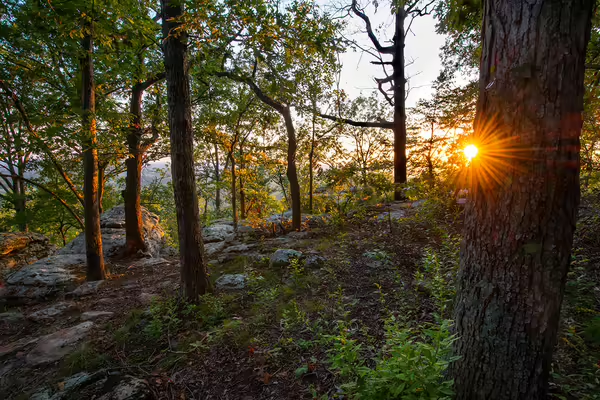
URBANA, Ill. — Illinois has 4.8 million acres of tree-covered land. From shading homes and feeding wildlife to producing oxygen and filtering water, trees do a lot of heavy lifting. Give them a hand by discovering innovative, research-based management options in the summer Forestry Stewardship Series from University of Illinois Extension.
Explore how to restore woodlands, learn about research about the impact of agricultural pesticides, find out about the legal protections for Illinois’ natural areas, and get solutions to managing woody invasive plants and white-tailed deer. Sessions in this five-part webinar series are free and available from 2 to 3 p.m. CT on Wednesdays from July 31 to August 28. This program is open to forestry professionals, landowners and managers, and the public. International Society of Arboriculture continuing education credits may be available. Sign up for one session or all of the following sessions at go.illinois.edu/ForestryStewardship.
- July 31 - Individual Plant Treatments to Control Woody Invasives
One technique used to manage invasive woody plant vegetation is focused, individual plant treatments such as herbicide foliar applications, cut stump, basal bark, and injections. These individual plant treatments can be extremely selective, are easy to apply, and can be used nearly year-round. Explore the methods used for each of the individual plant treatment applications, tips and techniques for success, and common herbicides and tools used with these applications. Presented by Chris Evans, University of Illinois. - August 7 - The Consequences of Agricultural Chemical Trespass into Illinois Ecosystems
The landscape of Illinois has been devoted primarily to agriculture for more than 100 years. Agricultural intensification has led to an increased use of synthetic pesticides to manage field crop weeds, which can move into natural ecosystems and negatively impact non-target plants. In 2023, the Illinois Natural History Survey sampled nearly 200 naturally vegetated areas across the state to understand how much chemical pesticide plants are exposed to and how often. At least one pesticide was found at 97% of the sites, along with visual evidence of herbicide damage. The results of this study indicate that pesticides are regularly crossing into unintended areas that are near row crops. Illinois Natural History Survey researcher T.J. Benson will share the results of this study, including the negative impact on trees such as oaks, redbuds, and box elders. Presented by T.J. Benson, Illinois Natural History Survey. - August 14 - Woodland Restoration from Forests to Front Yards
Illinois' forests face numerous stressors, including invasive species, disease outbreaks, and shifting environmental conditions that have resulted in the degradation of many forests around the state. However, there are steps anyone can take to start restoring our forest ecosystems, from regional forests to small plots within urban areas. Explore a holistic approach to the process of restoring woodlands that also accounts for a variety of management goals. And discover a variety of scale-based management techniques that apply in both traditional and novel ecosystems, such as urban forests. Presented by Justin Vozzo, University of Illinois. - August 21 - Natural Area Conservation in Illinois
Illinois is an innovator in natural areas conservation and management. Explore Illinois’ role in the natural areas movement, review conservation and legal protection options, and discuss how management is often necessary to maintain biodiversity, natural resources, and legal protections. Discover ways you can contribute to the legacy of natural area protection and management alongside natural resources professionals, landowners, and volunteers who are working to make a difference in the prairie state. Presented by Kevin Rohling, University of Illinois. - August 28 - Resources to Address Deer Impacts to Woodlands
White-tailed deer are an important part of Midwestern forests, but their browsing has an impact on forest health. Explore tools available from Purdue University Extension and The Nature Conservancy of Indiana that are designed to help woodland owners and managers understand, monitor, and manage deer impacts on forest ecosystems. Presented by Jarred Brooke, Purdue University.
The Extension forestry team conducts research projects, maintains demonstration sites, and teaches courses at University of Illinois. They also administer the Illinois Big Tree Program and the new Citizen Big Tree Inspector initiative. The program is part of the university’s department of natural resources and environmental sciences. Explore more about Extension forestry resources at extension.illinois.edu/forestry.
Illinois Extension leads public outreach for University of Illinois by translating research into action plans that allow Illinois families, businesses, and community leaders to solve problems, make informed decisions, and adapt to changes and opportunities. Illinois Extension is part of the University of Illinois Urbana-Champaign College of Agricultural, Consumer and Environmental Sciences.